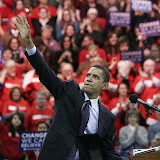Leonid Budkovsky delivered military mail to the Chernobyl zone for nearly 5 years after the 1986 accident. "In Chernobyl, no one knew how serious it was. We wore no special clothes," he told me. He began to have health problems in 1992 and by 1996 he was confined to a wheelchair. "I am 55 years old and no one needs me," he said. "I can still hold a spoon but I need help to go the bathroom and I have to wear Pampers."Why am I doing a project on radioactive lives? I have to admit, the more I photograph and interview, the less certain I am about the purpose of my project. I suppose such lack of clarity is unsurprising at this midpoint.
I set out with the idea that there were important stories to be told. Like most social documentarians, I wanted to shed a light in the darkness. Find the people who are suffering and let the world know about them; implicit in this equation is the idea that publicity is good, and that my work might motivate others to help. Another implicit assumption is that an individual story can be used to personalize and illustrate a broader problem.

Leonid with his grandson Slava.I still believe there are important stories to be told here, but they are not necessarily stories of suffering. Moreover, I am wondering if the simplistic equation of publicity = help is wrongheaded. An good essay by Jim Johnson on the purpose of documentaries has left me wondering about my own purposes.
Soon I'll be in Kazakhstan and I'll learn whether the issues I've found at Chernobyl are also present in the Semeypalatinsk Polygon (nuclear testing zone).




